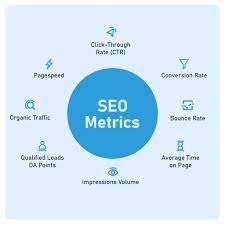
Measuring Success: Key Metrics for Evaluating Advertising Campaigns
In today's digital age, running successful advertising campaigns is crucial for businesses to thrive in a competitive market. But how can they determine if their advertising efforts are paying off? The answer lies in properly measuring and evaluating key metrics that directly reflect the success of these campaigns. In this article, we will delve into the essential metrics marketers need to consider for evaluating the effectiveness of their advertising campaigns.
1. Click-Through Rate (CTR)
The click-through rate measures the percentage of users who click on an ad after seeing it. It provides insight into how compelling and engaging an advertisement is for its target audience. A high CTR indicates that the ad resonates well with the users, while a low CTR suggests that it may need adjustments to be more effective.
2. Conversion Rate
The conversion rate measures the percentage of visitors who take the desired action after clicking on an ad, such as making a purchase, filling out a form, or subscribing to a newsletter. It helps determine the campaign's impact on driving actual results and can highlight areas for improvement in the user journey.
3. Return on Investment (ROI)
The return on investment metric evaluates the profitability of an advertising campaign. It takes into account the total revenue generated by the campaign compared to the cost of running it. A positive ROI indicates that the campaign is profitable, while a negative ROI suggests that adjustments are needed to achieve a desirable return.
4. Cost per Acquisition (CPA)
The cost per acquisition metric measures the average amount spent to acquire a customer or lead. It helps evaluate the campaign's efficiency in driving conversions, allowing marketers to optimize their budget allocation and maximize results.
5. Engagement Metrics
Engagement metrics include various factors such as likes, comments, shares, and time spent on a website or landing page. These metrics gauge the level of audience interaction and interest in the ad. High engagement indicates that the campaign is effectively capturing attention and fostering user involvement.
6. Brand Awareness
Brand awareness metrics assess the impact of advertising campaigns on increasing brand recognition and recall. These metrics can include brand mentions, direct searches, or social media sentiment analysis. A successful campaign should contribute to building a strong brand presence in the market.
7. Reach and Impressions
Reach measures the total number of unique users exposed to an advertisement, while impressions indicate the number of times the ad was displayed. Both metrics help determine the campaign's visibility and potential audience size. A wide reach and a high number of impressions can contribute to the campaign's success.
8. Customer Lifetime Value (CLV)
The customer lifetime value metric calculates the net profit generated by a customer throughout their entire relationship with a business. It considers repeated purchases and the duration of the relationship. By assessing the CLV, marketers can determine the long-term impact and profitability of their advertising efforts.
9. Social Media Metrics
For advertising campaigns utilizing social media platforms, it is essential to measure social media-specific metrics. These include follower growth, engagement rate, social shares, and user-generated content. These metrics shed light on the campaign's performance across different social media channels.
10. Surveys and Customer Feedback
While digital metrics provide valuable data, it is crucial not to overlook the power of direct customer feedback. Surveys and feedback forms can offer insights into customers' perceptions, preferences, and experiences with an advertising campaign. This information can help pinpoint strengths and weaknesses and guide future campaign improvements.
By measuring these key metrics for evaluating advertising campaigns, businesses can gain a comprehensive understanding of their performance and optimize their strategies for greater success. Remember, monitoring and analyzing data are vital steps to ensure the effectiveness and efficiency of advertising investments.